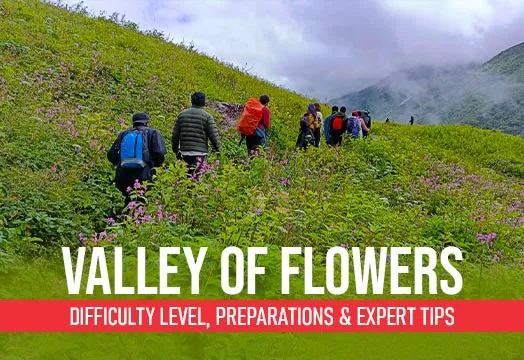The Valley of Flowers Trek is a popular destination for trekking in Uttarakhand. The trek is renowned for its impressive natural beauty and rich biodiversity. Situated at an altitude of 11,500 ft, this enchanting valley is a part of the Nanda Devi Biosphere Reserve. In 2005, the Valley of Flowers was declared a UNESCO World Heritage Site, primarily due to its unique alpine flora and diverse ecosystems. This recognition underscores the ecological importance of the region and its contribution to the conservation of rare and endangered plant species. The Valley is home to a vast variety of flowers, including many endemic species, making it a living laboratory for botanists and nature enthusiasts.
In the present time, the Valley of Flowers has gained international acclaim for its exceptional floral biodiversity, with thousands of different floral species adorning the meadows during the blooming season. Notable species include the blue Himalayan poppy, the Brahma kamal, the cobra lily and many more. Beyond its floral beauty, the Valley also hosts diverse fauna, including elusive Himalayan wildlife such as the snow leopard, red fox, and blue sheep. The convergence of natural elements in this region contributes to its ecological significance and makes it an invaluable part of the global natural heritage.
The Valley of Flowers has also gained cultural significance, with local legends and myths associating it with the epic tale of the Mahabharata and Ramayana. The valley is believed to be the spot where Lord Hanuman found the mythical Sanjeevani herb to revive Lakshmana. You also visit Hemkund Sahib, the highest Gurudwara in the world along this journey. This cultural backdrop adds a spiritual aura to the already enchanting landscape, making the Valley of Flowers a destination that seamlessly blends natural beauty with cultural significance.
Notable Varieties of Flora in the Valley of Flowers National Park
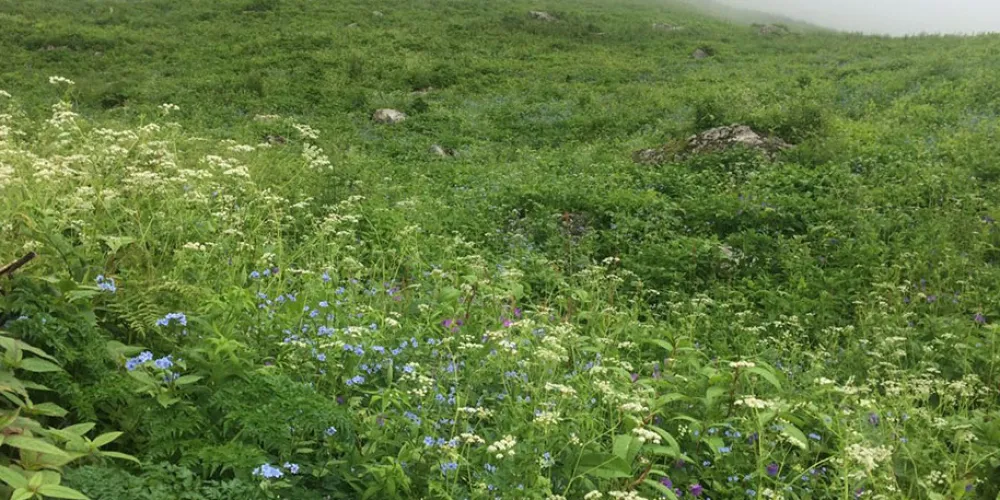
The Valley of Flowers is home to about 600 species of flora including poppies, orchids, marigolds, primulas, daisies and anemones, along with many eye-catching plants, and medicinal herbs. Brahma Kamal, Cobra Lily, Blue Poppy, Cosmos or Mexican aster, Cheerful Senecio, Primroses, Red Mountain Fleeceflower, Showy Inula, Haldya Phool, Himalayan Saxifrage, Himalayan fleabane, Himalayan arsh Orchid are some exotic flowers to look out on the trek. You will also spot some medicinal herbs like Himalayan Bog Star, Himalayan Thyme, Vajradanti, and Ativisha.
Best Time to Visit the Valley of Flowers
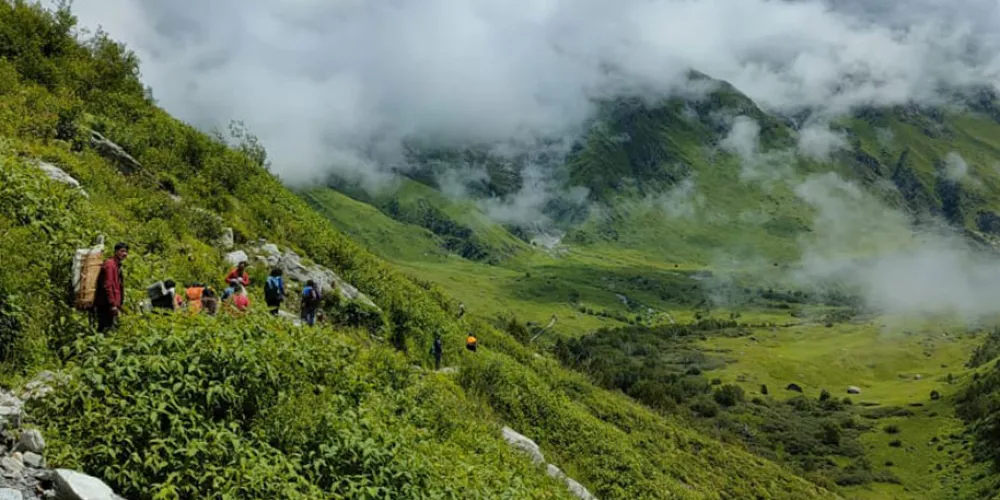
Valley of Flowers offers a different spectacle in different months.
Valley of Flowers in June
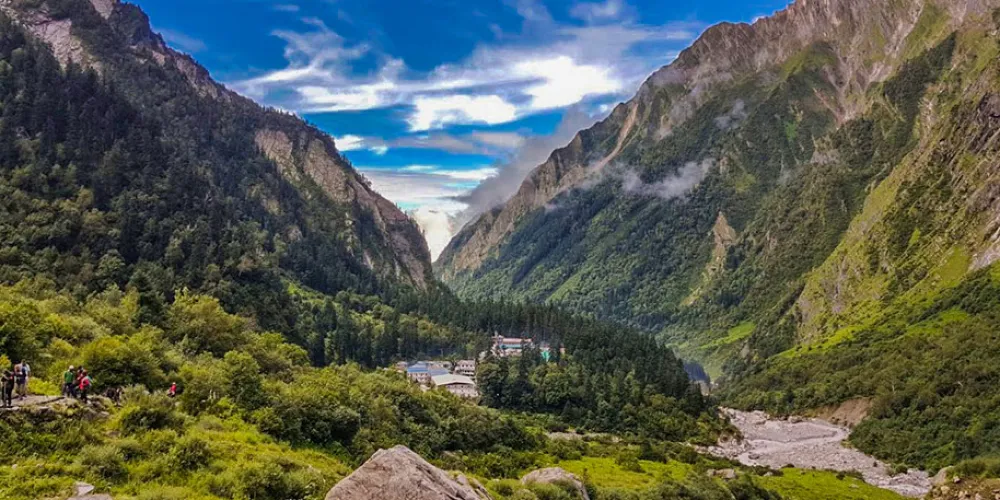
The Valley of Flowers trek opens up in the month of June and it is during this time that the snow begins to melt and plants start to germinate. If you visit the valley during this time, you will get to see many tiny buds and sprouts ready to transform into vibrant blooms. Some floral species begin to bloom in June itself like creeping woodsorrel, wild thyme, wild rose, yellow flax, marsh marigold, smooth-leaf white violet, Indian Burberry, Himalayan strawberry and yellow star of Bethlehems.
Temperature: The temperature ranges from 17 degrees Celcius to a maximum of 29 degrees Celcius during this time.
Rain in June: There is no rain in June and as such the trails are dry, although not many flowers will be blooming. The valley will, however, be fragrant with the smell of fresh buds and flowering ones.
Valley of Flowers in July
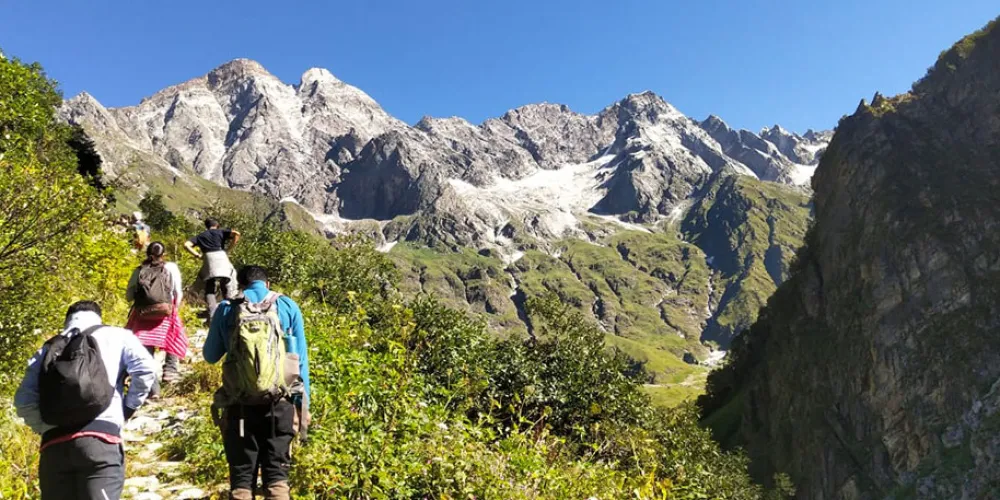
July marks the beginning of monsoon in the Valley of Flowers region and the flowers begin blooming and will remain in full bloom till the end of August. You will find a variety of flowers and an abundance of greenery during this time. During this time you can see big colonies of anemones, golden lilies, geraniums and some species of Orchids. With the onset of monsoon, you will see a pink tinge on the banks of the rivers. This is Epilobium Latifolium commonly known as Dwarf Firewood. This flower is found in abundance in the Valley of Flowers.
Temperature: In July, the temperature ranges from a minimum of 6 degrees Celsius to a maximum of 11 degrees Celsius.
Rain in July: The first half of July doesn’t see much rainfall while the second half sees a considerable amount of rainfall. So be prepared for the rain, when you are visiting the Valley of Flowers.
Valley of Flowers in August
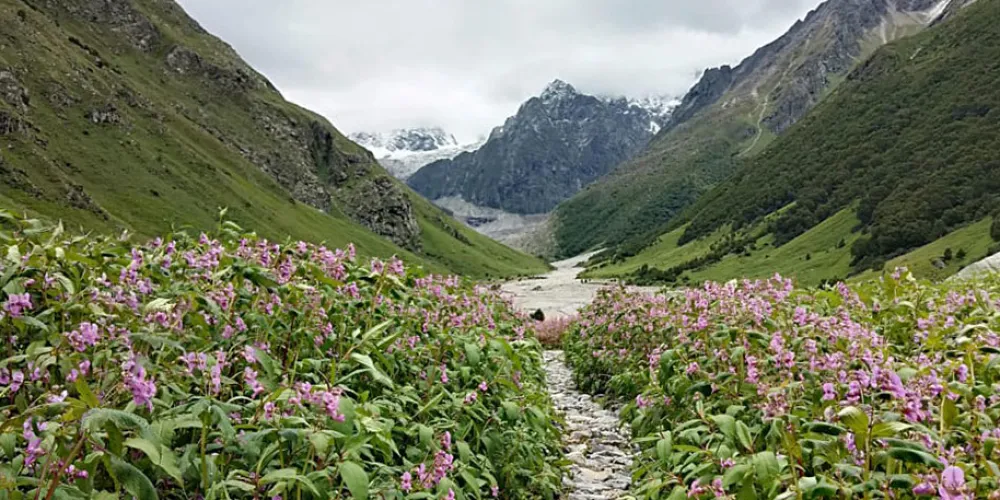
August is when monsoon is in full swing and the first 15 days of the month see a lot of flowers in bloom. With the most number of flowers in the duration, the valley is open. However, heavy monsoons can sometimes also cause the flowers to wilt their petals. August is one of the best times to visit the Valley of Flowers as you can see a number of flowers.
Temperature: The temperature ranges between 6 degrees Celsius and 12 degrees Celsius during August.
Rain in August: Expect a good amount of rain during this time of the year but it is also quite fun to trek in the rain. While most of the Himalayas are closed during monsoon season, you get to see what monsoon in the mountains is like during this time. Also, an added bonus of trekking during August is that, due to rainfall, the Badrinath Temple is nearly empty and you can have your darshan without a big crowd.
Valley of Flowers in September
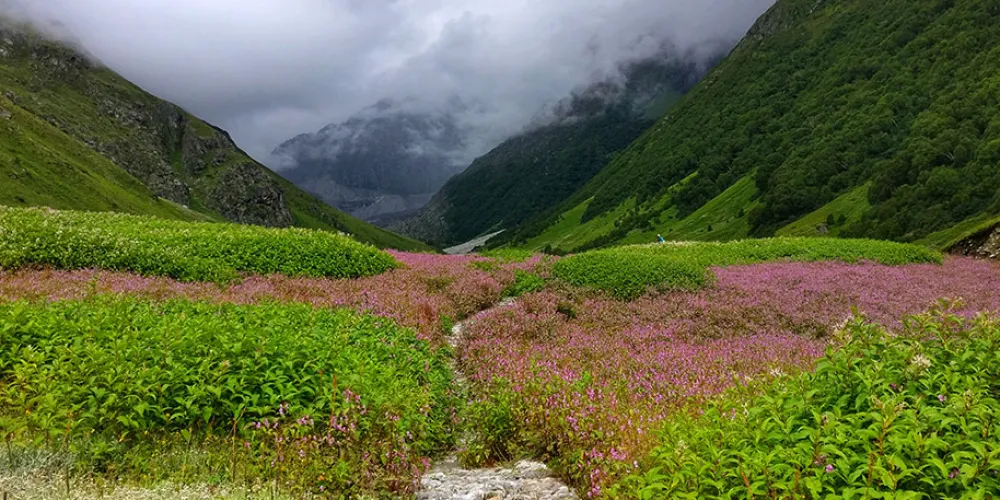
Monsoon is over by the first week of September and during this time the flowers have mostly matured and you will see more varieties of berries at this time. There are still a lot of flowers near the Hemkund Sahib region. One great thing about trekking during this time is that the sky begins to clear up and you can see more beautiful views of the mountains. The valley also changes its colour from green to a yellowish tinge marking the onset of autumn.
Temperature: The temperatures linger between a minimum of 4 degrees Celsius to 11 degrees Celsius.
Rain in September: There is minimal rainfall during this time with only drizzles here and there. The rain stops completely towards the end of September.
A Common Misconception about Visiting the Valley of Flowers
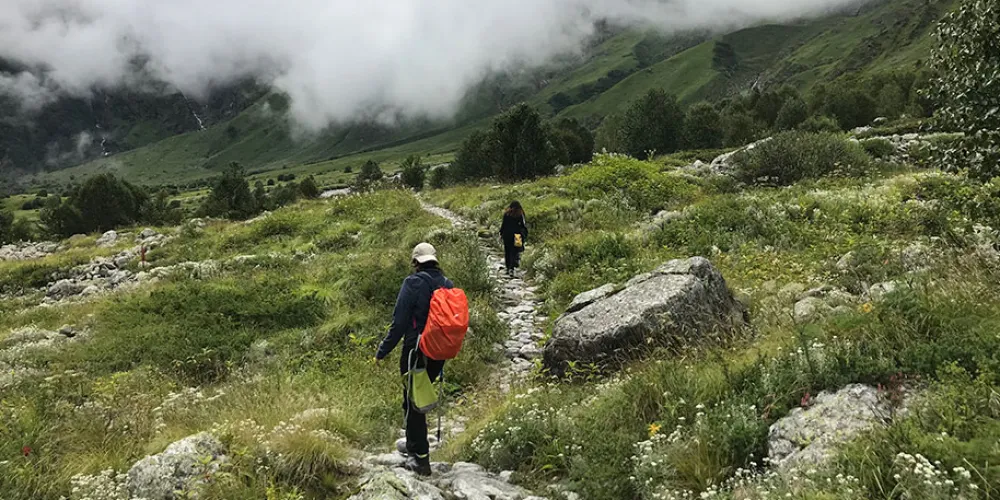
If you are deciding the best time to visit the Valley of Flowers then here is a common misconception that trekkers have. While the Valley of Flowers is home to a large variety of flowers, as many as 500 species, many trekkers come with the misconception that they will see all the flowers blooming at the same time.
All the flowers do not bloom altogether, however, maximum of the flowers bloom from July to September. While some bloom in June, some in July, some in August and September and some bloom even outside of these months when the valley is closed so do not expect to see all the flowers blooming together.
So depending on what kind of flowers you want to see, what kind of views you want and the presence of the crowd, you can decide what is th best time for you to do the Valley of Flowers Trek
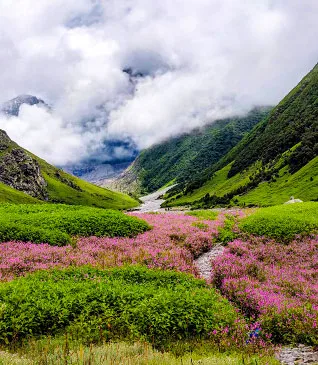
.webp)
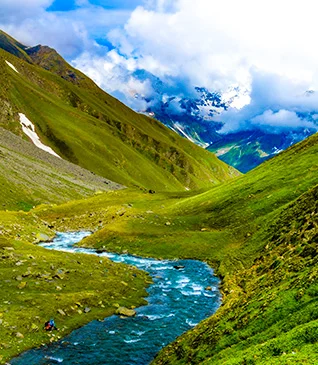
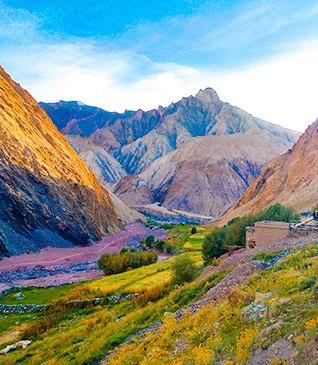
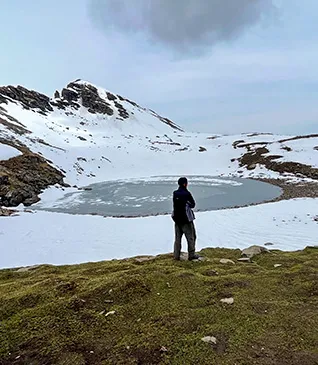
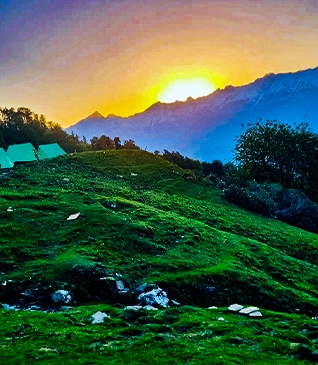
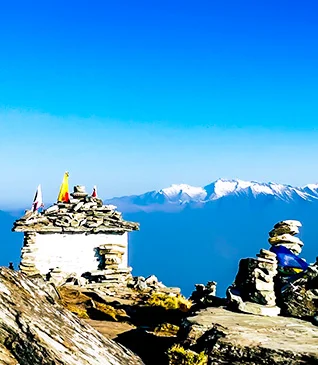
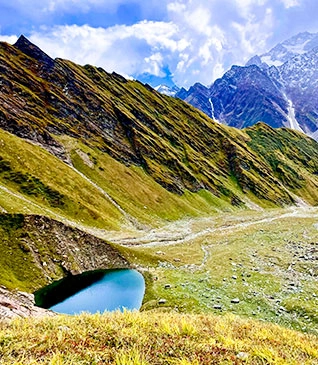
.webp)
.webp)
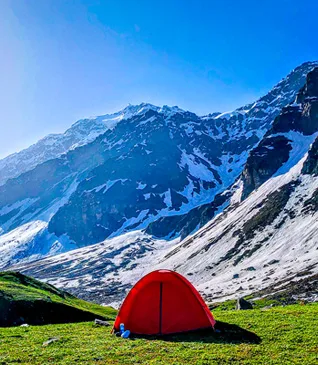
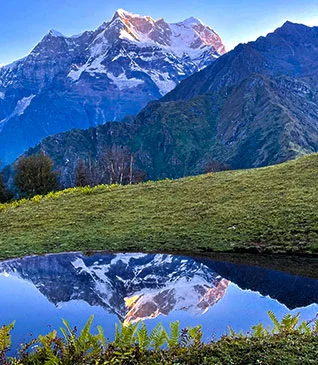
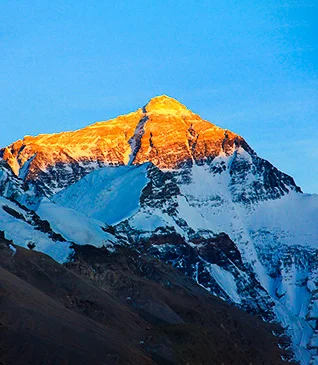
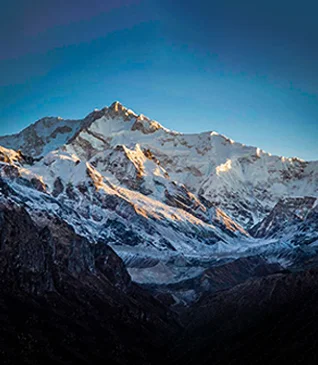
.webp)
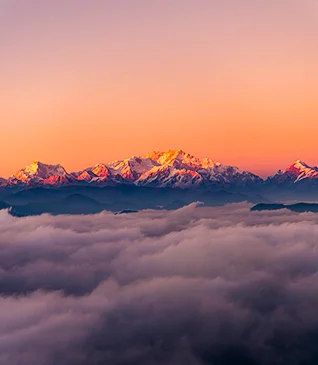
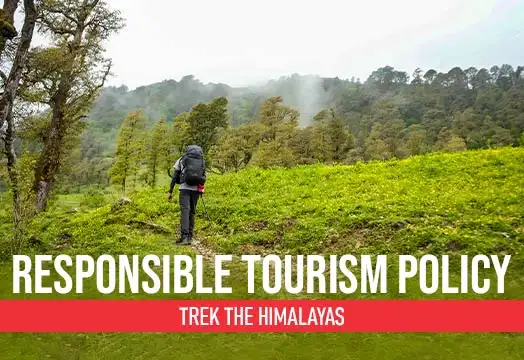

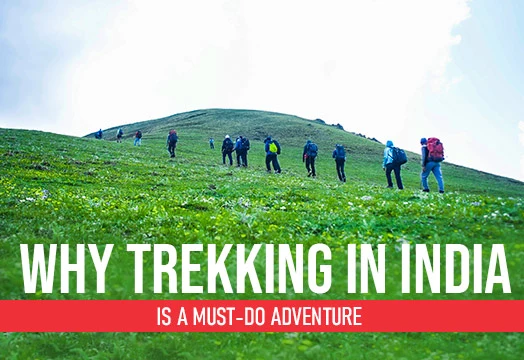

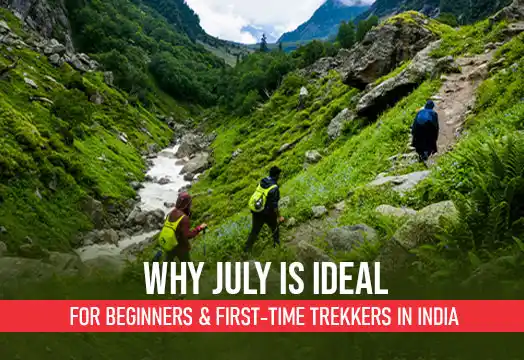
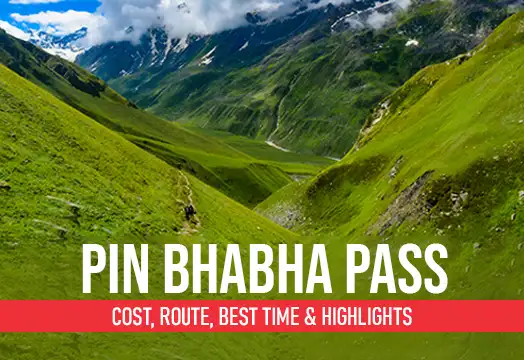
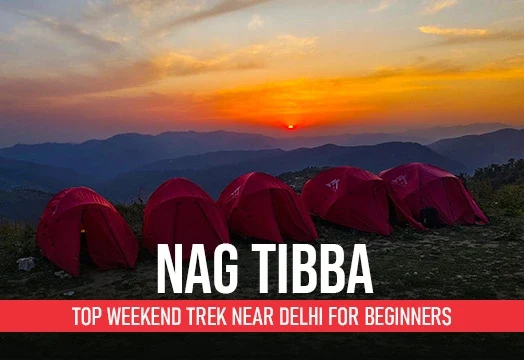
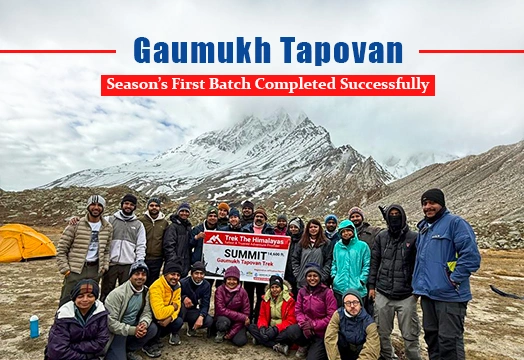

.webp)
